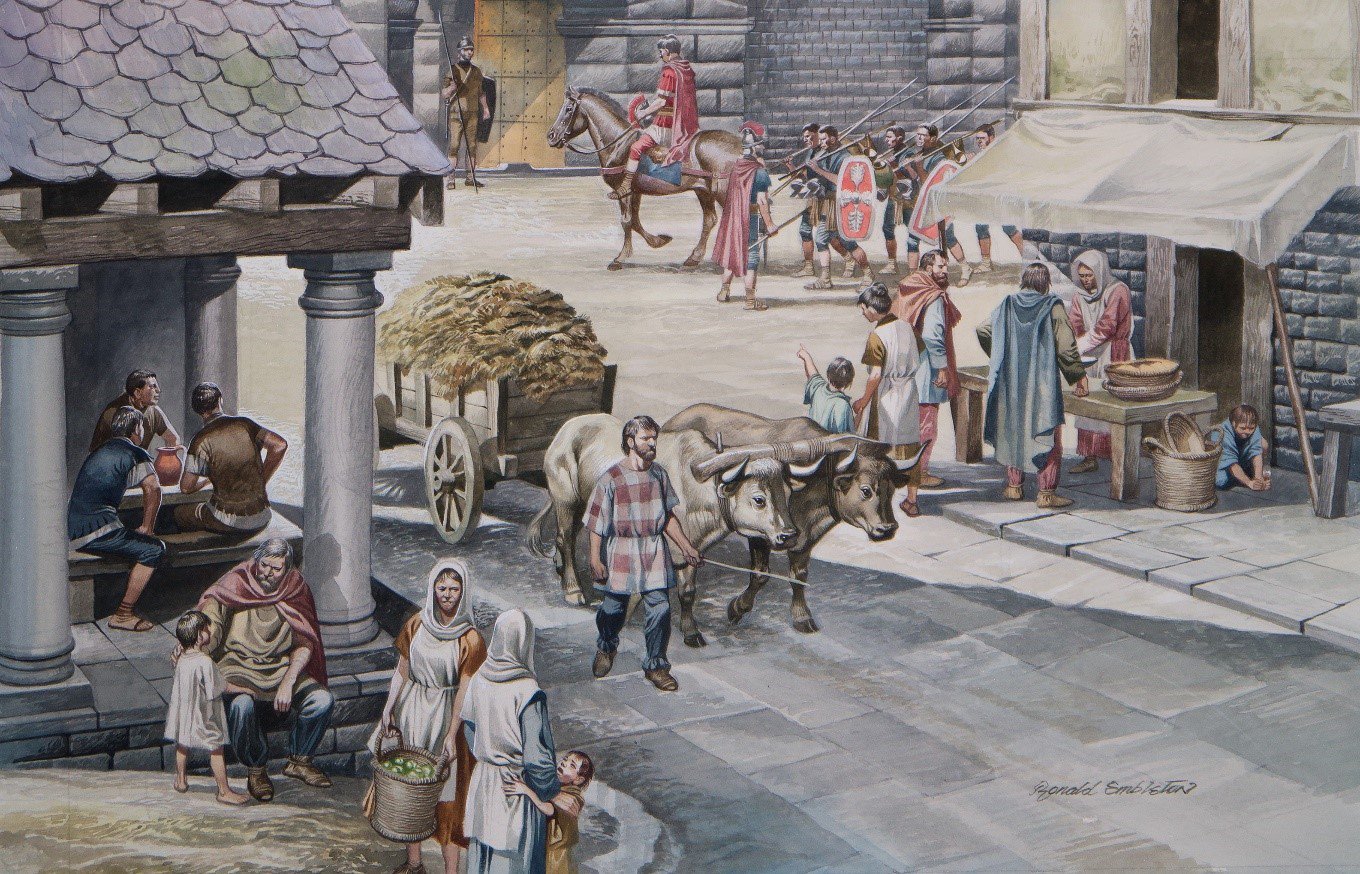The Civilian settlement around the Fort
These teacher notes provide information on the civilian settlement around the fort. You can download a copy of these teacher notes below.
Download: The Civilian settlement around the Fort PDF resource here (2.4 MB)

Vicus
Outside the fort, there were fields and meadows which the army used for grazing animals (including over 120 horses at any one time). At Wallsend, many of these may have been north of Hadrian’s Wall. There was also a training ground, military bath-house, temples, a cemetery and civilian settlement.
A civilian settlement (vicus) sprang up to the south and west of the fort to accommodate traders and craftsmen supplying the garrison. It was enclosed to the north by Hadrian’s Wall and to the east by the fort and Branch Wall (the section of Hadrian’s Wall running from the fort to the river) and had a defensive bank and ditch on its west side. Little is known of the lay-out of the settlement, but it is clear that it extended down to the river, and almost certainly included some sort of harbour facility for the offloading of supplies. The bath-house at Segedunum was on the opposite side of a small valley to the west of the fort, near the river.
Also, to the west, on the road from Segedunum towards Pons Aelius (the Roman fort at Newcastle) there was a temple complex and cemetery. Several altars and dedication stones, making reference in particular to Mercury, the Roman god of traders and merchants, were found there during the laying out of allotments at the end of the nineteenth century.
Civilian settlements outside forts were occupied by people such as traders, merchants and craftspeople who made a living trading with the soldiers. They came from throughout the Empire and most adopted the Roman way of life. They lived in rectangular houses, dressed in the Roman style, used money and learnt to speak basic Latin as this would have been their only common language. For the first 70 years of the fort’s existence, rank and file soldiers were not legally allowed to marry, but their unofficial wives and children may also have lived in the vicus.
The building of Hadrian’s Wall and the fort had a devastating effect on the local farmsteads in the area and within 35 years they were all abandoned. For other people who lived in more remote settlements, the arrival of the Roman army did not radically affect their day-to-day lives. They continued to farm their land in the same way and to live in circular huts which were occupied by extended families. They did not use Roman pottery or money and continued to speak their native language.
A few native objects have been found at Segedunum. They include a large pin which may have been used to fasten a cloak, a handle from a wooden drinking vessel, and pieces of horse harness.




